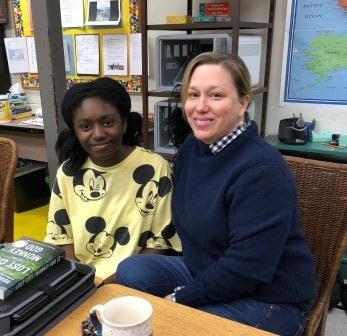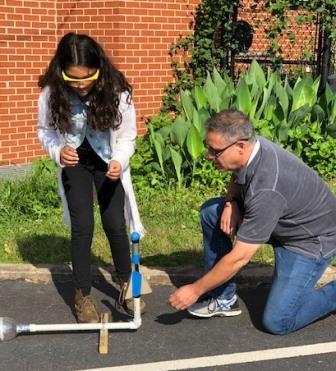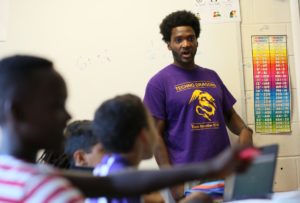
Laura James, Head of Middle School, revels in the thick of it. During her 30-plus years in education she’s felt most at home working directly with students, always asking, “What do children need to succeed?” That simple question pretty much sums up her life’s work as an educator and an administrator.
In 2014 Waman French, Head of School at The Friends School of Atlanta (FSA), asked if she could step in to support the school’s growing middle school. In retrospect, the timing couldn’t have been better.
Before FSA Laura had spent years at The Children’s School in midtown Atlanta teaching various grades, from kindergarten through middle school. She then earned her master’s degree in curriculum design for learning differences. “I then realized something that has proven to be truer than anything else I know: Everybody learns differently. It’s not just that children with dyslexia learn differently. Everyone does.”
She moved up to become principal of the Children’s School middle school program, then retired from that several years later and moved into educational consulting. The career move that made sense at the time, since her mind was set on retiring from school life. But then she got the call from Waman.
“I had zero intention of returning to the world of school,” she recalled. “I had celebrated leaving it, in fact. But the honest truth is, I was mesmerized and captivated by the faculty at FSA. The kids are wonderful here, and the philosophy and mission are aligned with everything I know. But I watched how the teachers taught here, and I knew I wanted to be part of this.” Seeing FSA in action reminded her why she had wanted to teach in the first place: to help children be the best they can be—and not just academically, but socially and emotionally, too.
Laura helps teachers design curriculums that match the needs of the kids they have. That’s not unique, especially among progressive independent schools. “But this is more,” she said. “Here, it’s more about, ‘What can I do to help you do your job? What can I do to get things out of your way, so you can just focus on the kids? What do you need? Once we know, let’s get it. And it’s a moving target. It changes. But let’s do the best we can today, and then let’s do it again tomorrow.’”
This has brought Laura’s lifelong specialty—what’s known in educational circles as “differentiated instruction”—to another level. Again, everyone learns differently, and teachers aim to give students the unique help they need. This can include assistive technology like voice-to-text, but it also be about pushing students as far as they can go, be it in math or science or a second language. If a student proves he or she is ready for, say, high school calculus, FSA gives that person the tools to go forth and learn, derivatives and all.
It’s not just what students learn, but how. “For instance, we teach various ways a student can study and how to prepare for a test,” Laura said. “Some study with a person, some study alone, some are in groups. And we find that, by the time kids reach 12 or 13, they’re picking the best ways that work for them.
“In other words, they’ve learned what they need to be successful.”
For the middle schooler— and, for that matter, all of us—this may well be the most valuable lesson of all.

